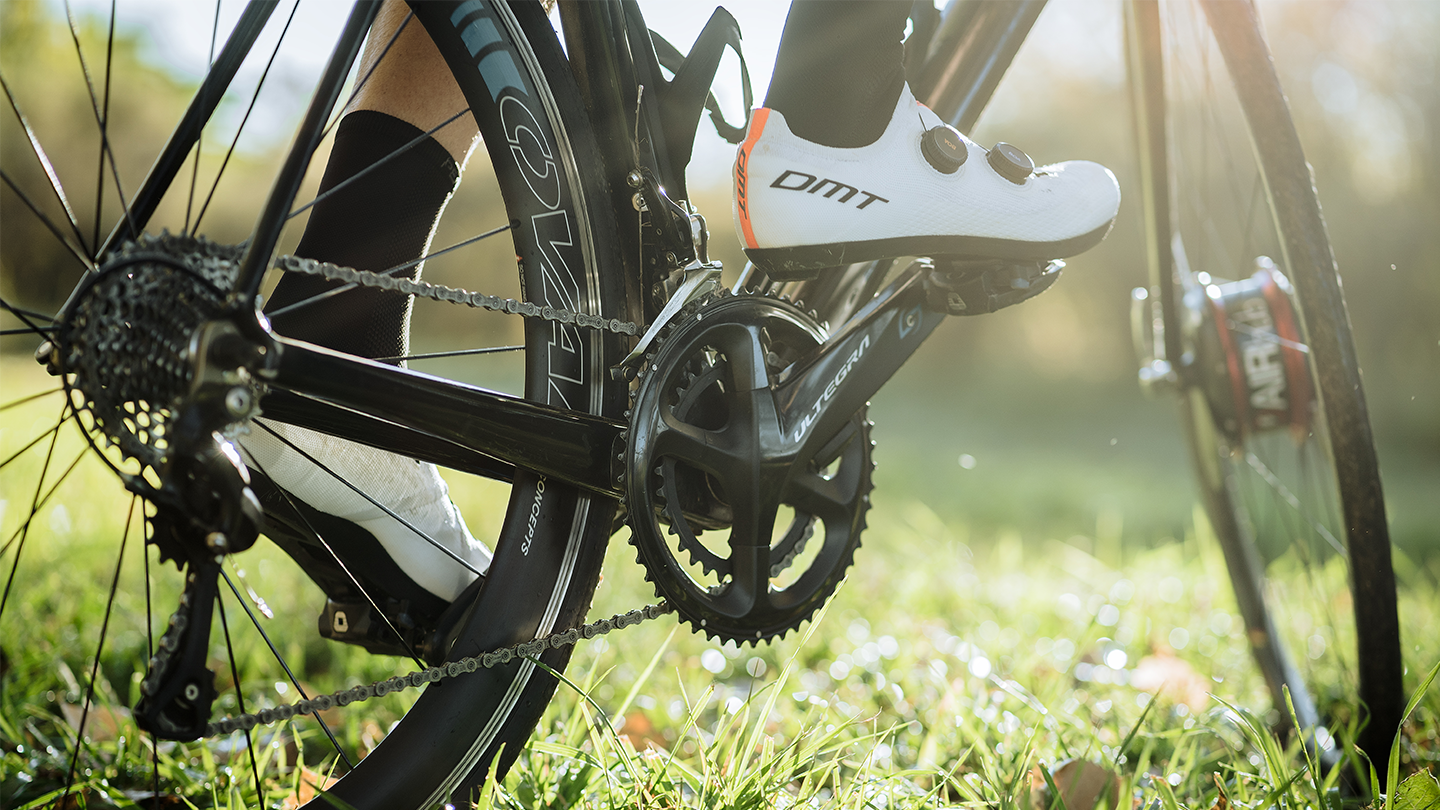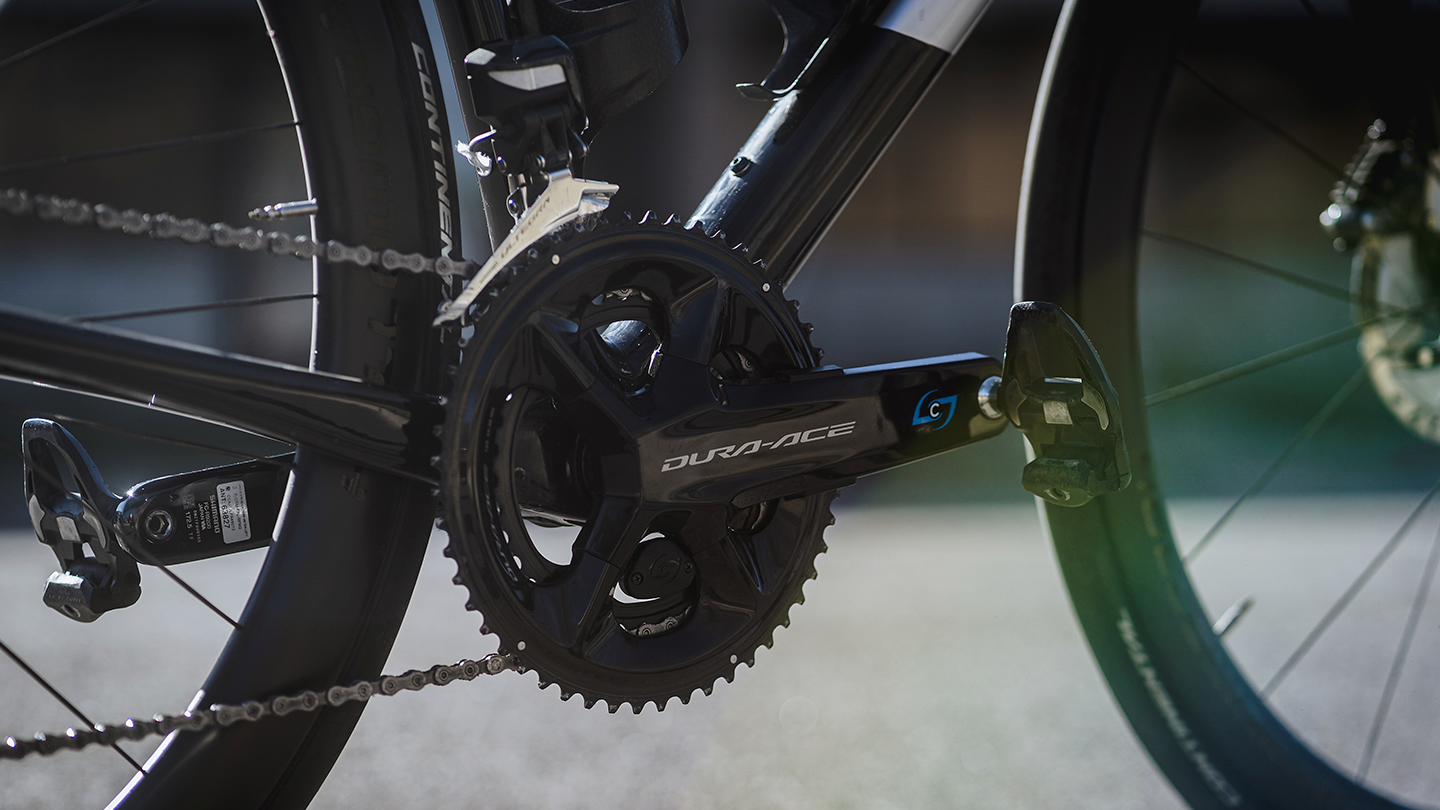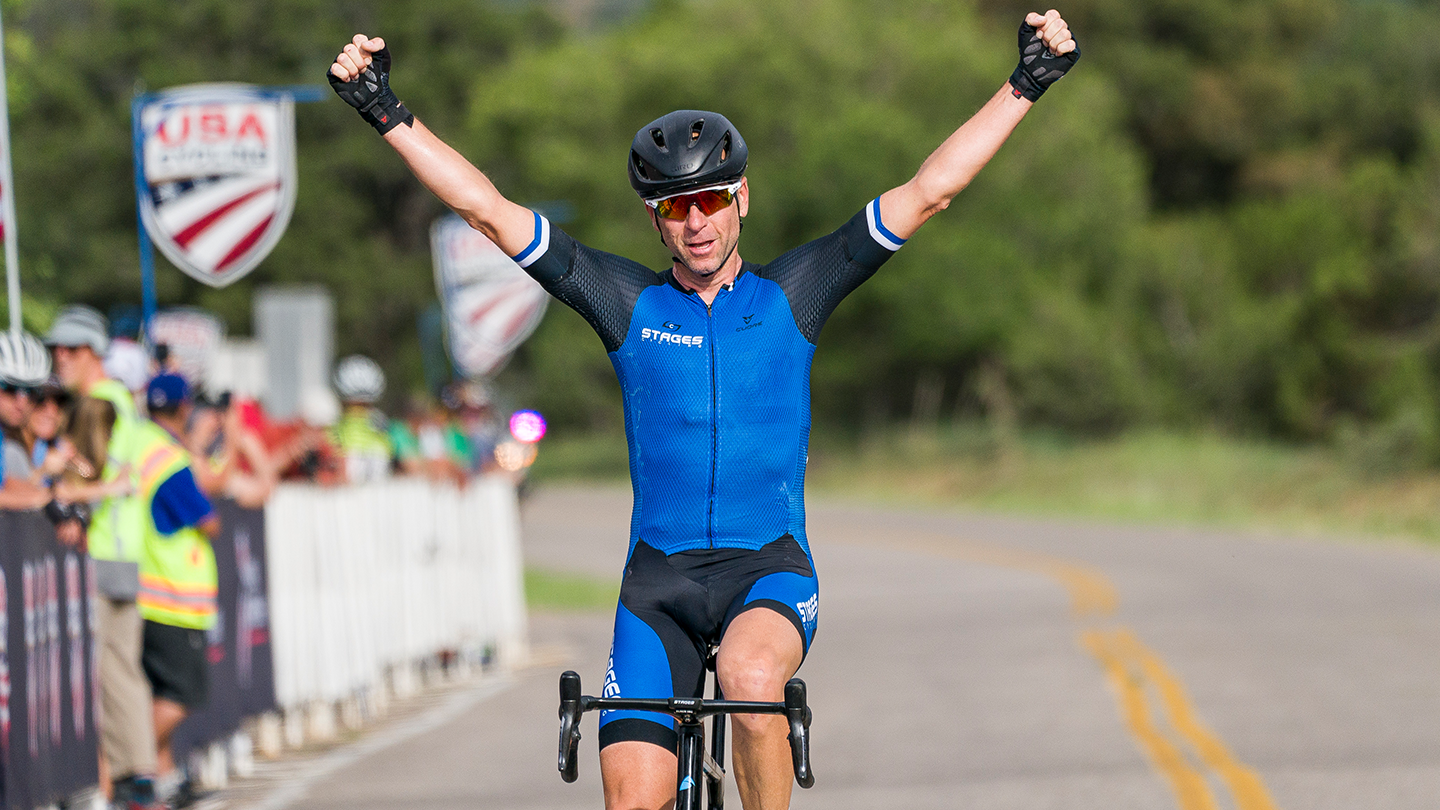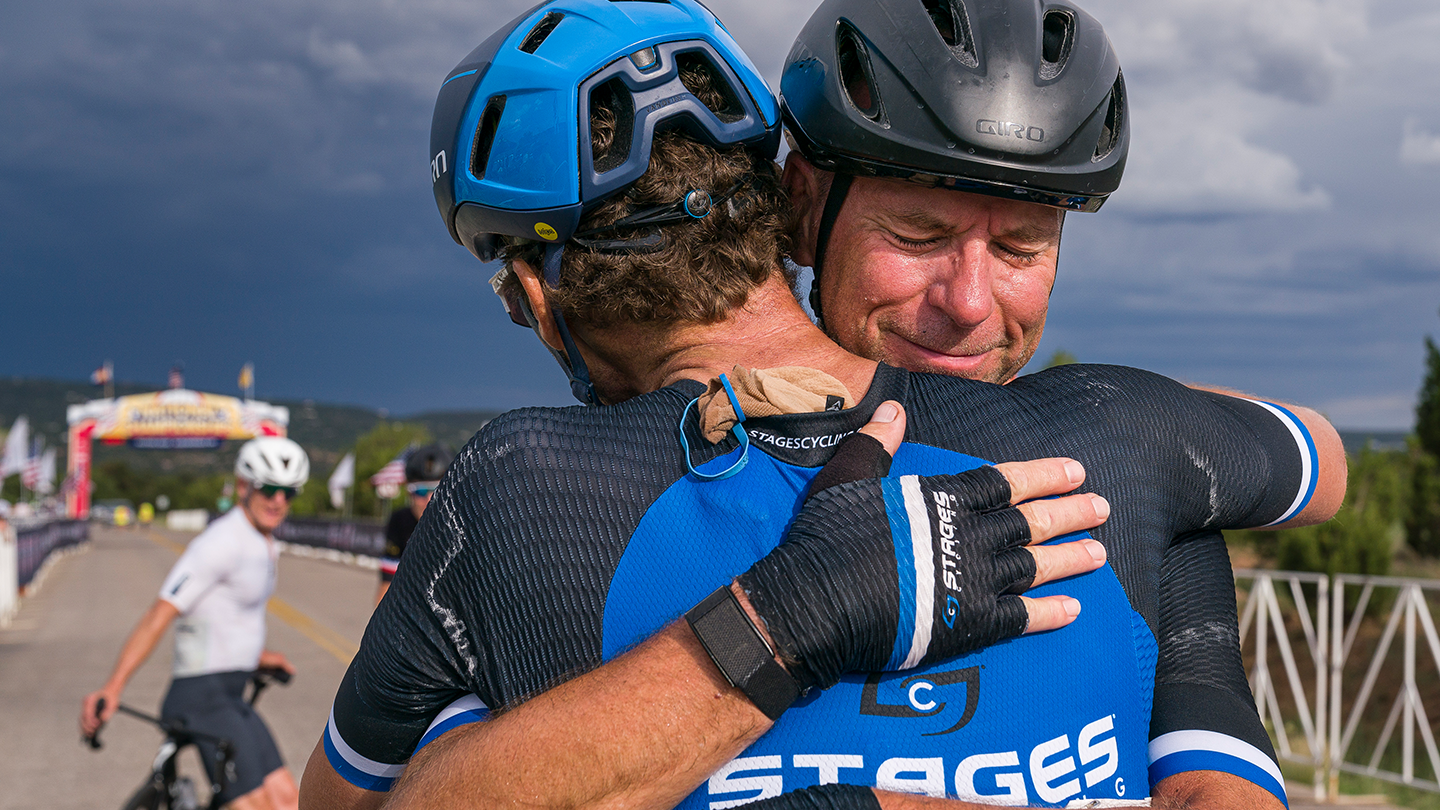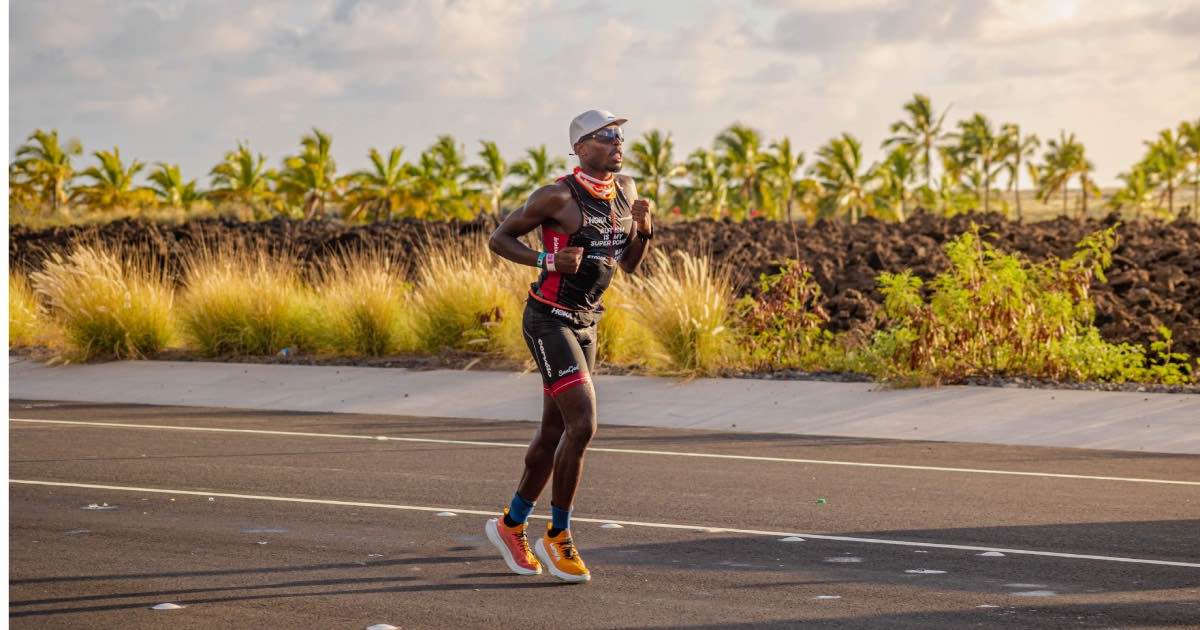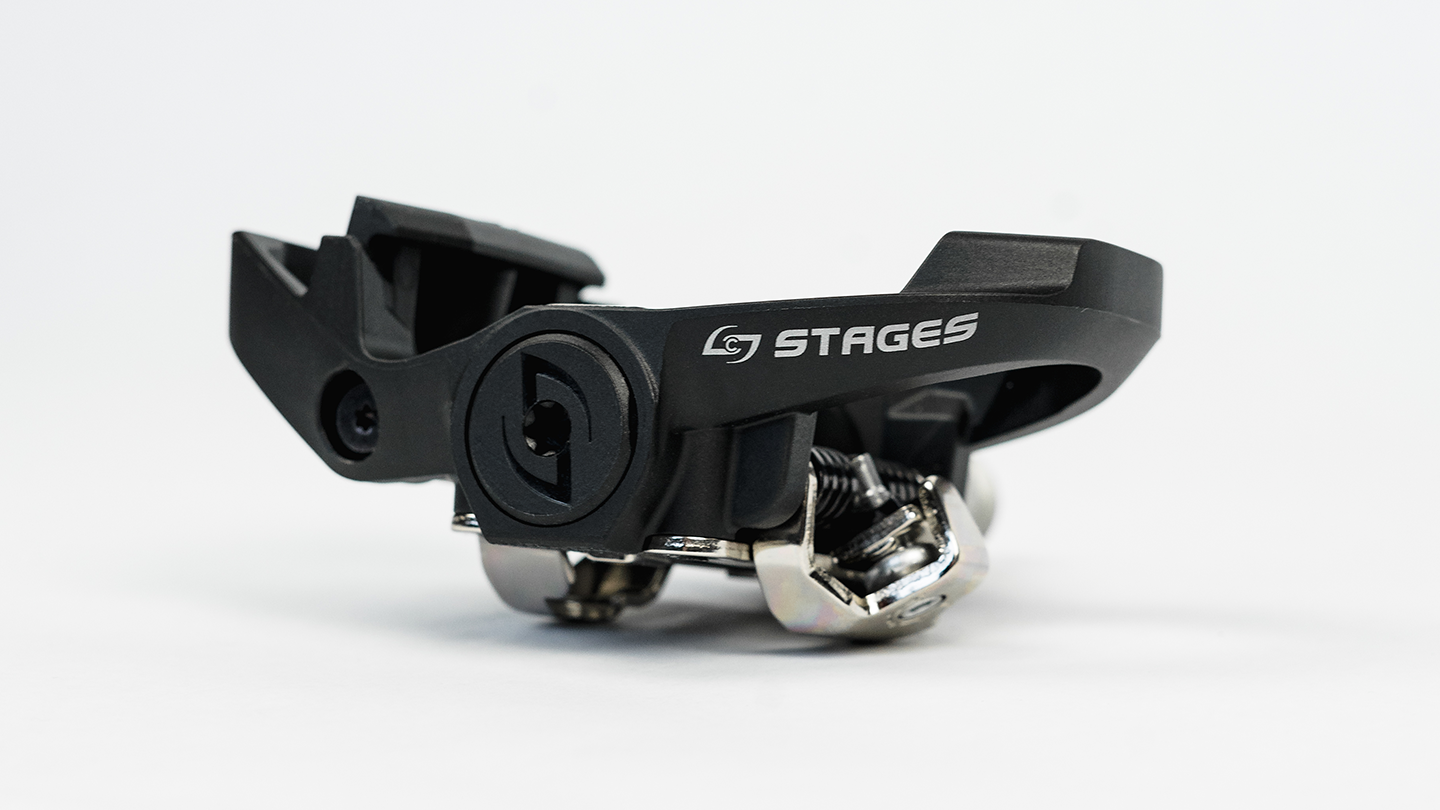Hannah Otto On Winning Leadville and the Life Time Grand Prix
- By Benjamin Sharp
- Published: Nov 23, 2022
- Last Updated: Nov 28, 2022
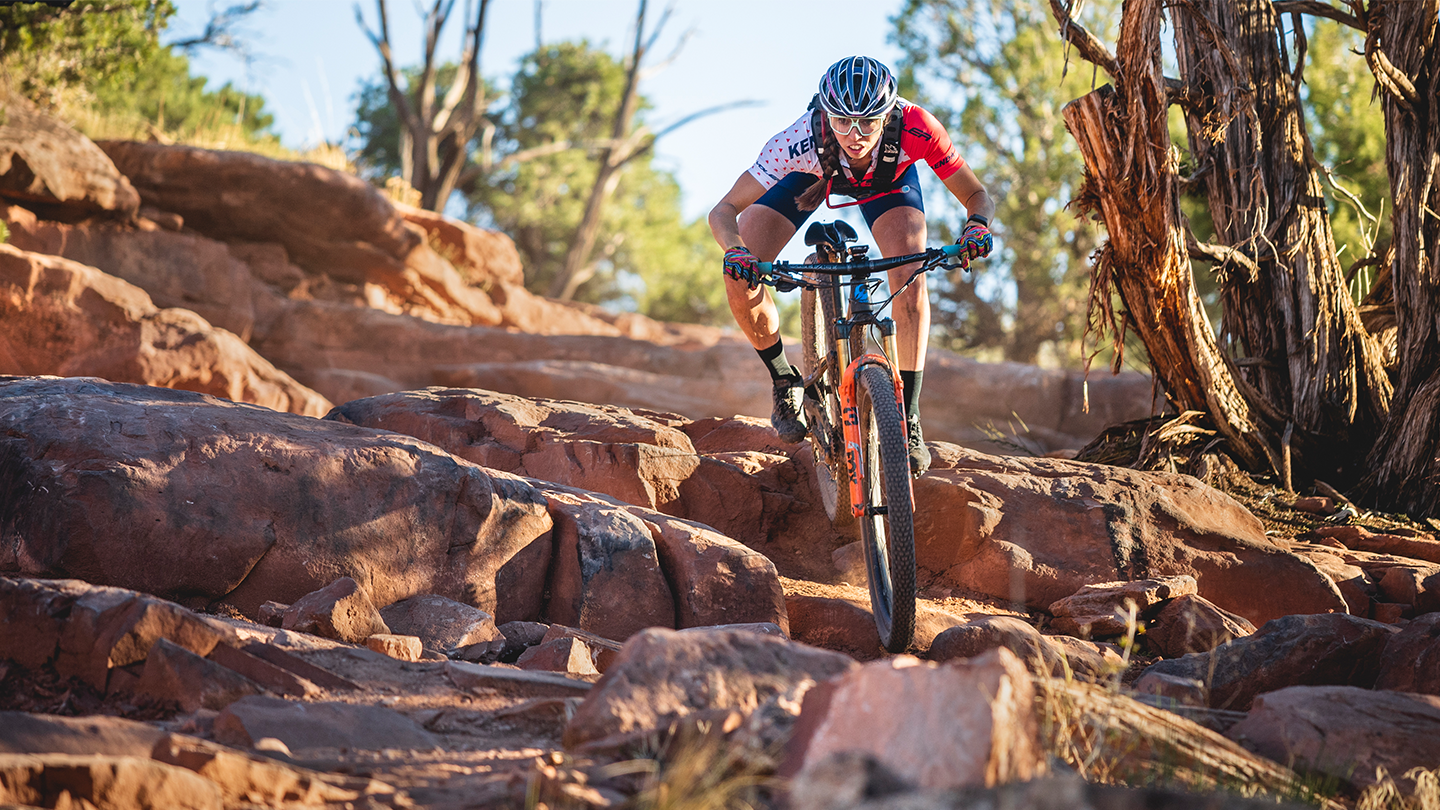
Fresh off of her Fastest Known Time attempt of the Whole Enchilada Trail in Moab, UT (recorded on a Stages Dash), I had the opportunity to sit down to talk to Hannah Otto about her experiences at the Life Time Grand Prix. The Grand Prix is a multi-discipline event that included three cross-country mountain bike races and three gravel races. Racing events that can span 7+ hours was a bit of a departure from the bread and butter World Cup Cross-Country and Short Track events from which the mountain bike professional has forged her career. Hannah won the Leadville 100 mountain bike race en route to securing 7th place overall in the series.
Hannah rides races and trains with Stages Power meters, Stages Dash and Stages SB20 Smart Bike.
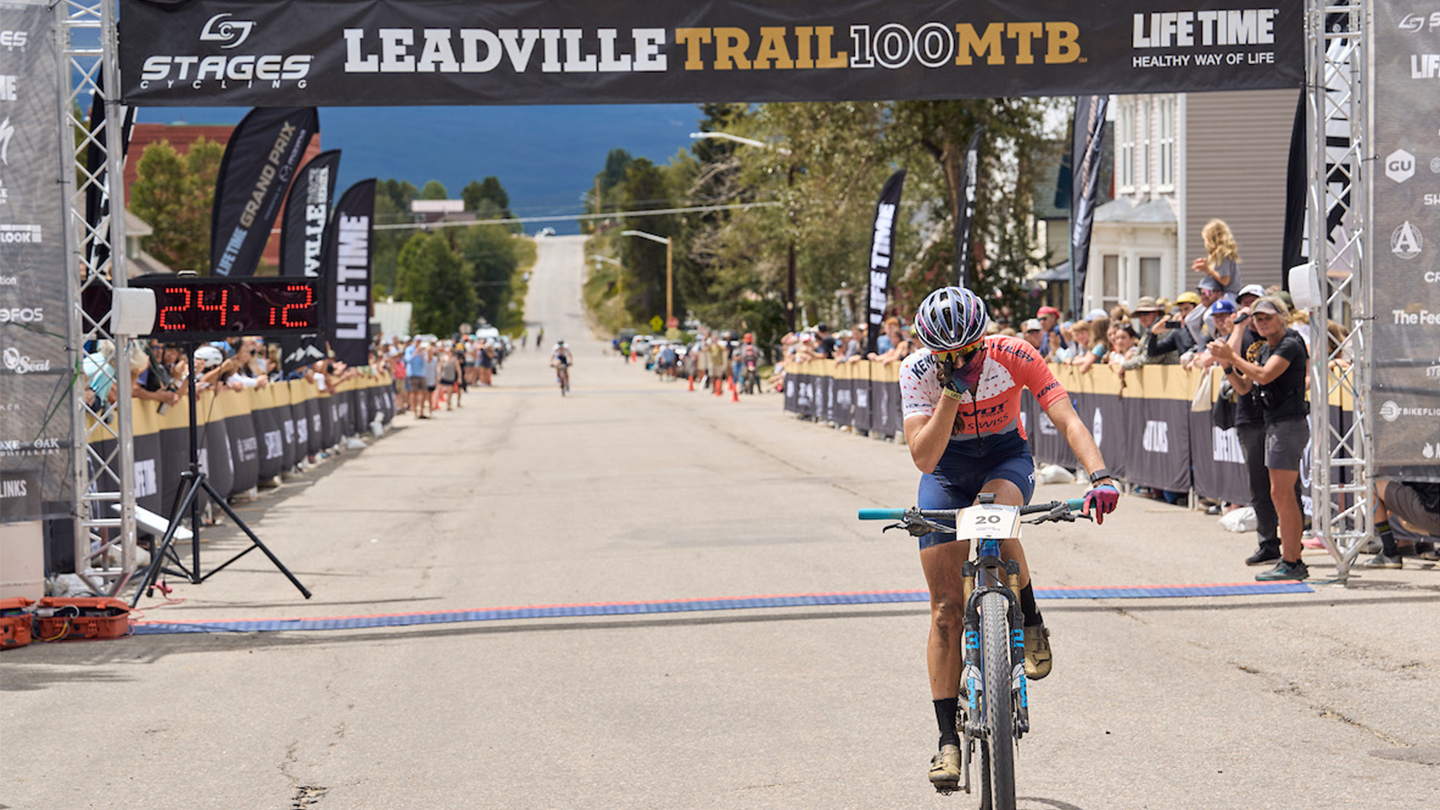

Benjamin Sharp: What were your aspirations going into the final event of the series?
Hannah Otto: Just to put together a really solid race. I know that’s a little bit of a standardized response but, I really went through a lot in the season; some major highs and lows and one of the lows I had was sustaining a concussion in Val de Sol in September. And so Big Sugar was really a chance to be able to finish the season off having overcome that concussion. So, that was really my big over-arching goals, was to put a stamp on the season as finishing healthy, finishing strong, and making it through the whole thing, you know, feeling good, end to end because it was a really big, ambitious season. To feel good at Big Sugar was kind of an indication that I had completed the season and done a good job throughout the year.
BS: How long was it from Val de Sol crash to Big Sugar?
HO: The Val de Sol was the beginning of September, I believe it was September 3. Big Sugar was October 22. So, for me it was about a one month recovery from that concussion then I had about 3 weeks to get my feet under me and push forward for a big finish.
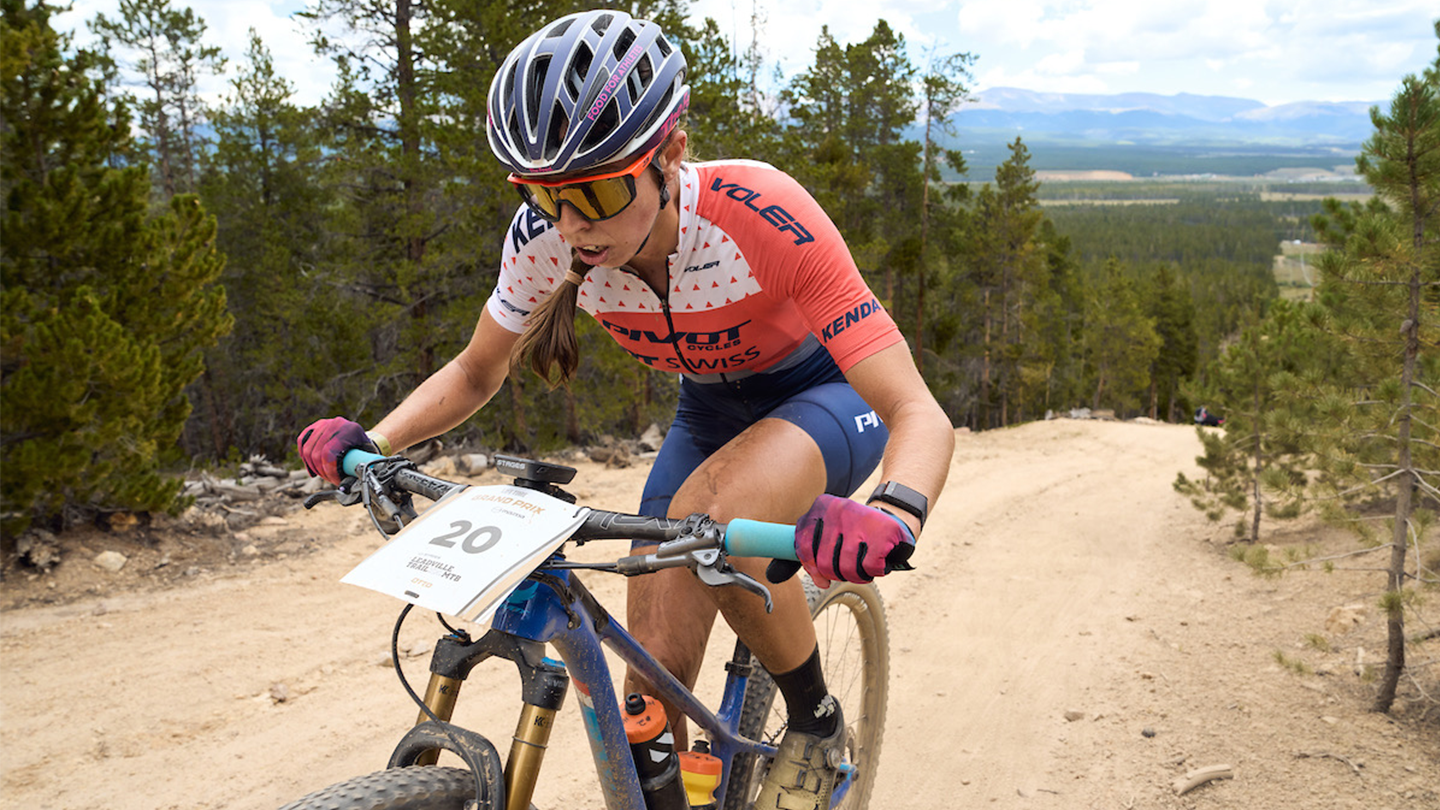

BS: Does that mean you missed The Chequamegon Bike Festival?
HO: That was a tough part of the story. I did race Chequamegon. I felt like I had recovered and I had a doctor’s permission to go there with the doctor having signed off that I had recovered. But the difficult part of a concussion is that it is all symptomology based. There’s no really no way to measure “ok, you’ve recovered” or, “ok, you haven’t recovered”. At rest I was feeling ok. With aerobic exercise I was feeling ok. We tried to do some race simulations in training. But, nothing is the same as race day. So, when I lined up for Chequamegon, in the first twenty minutes of the race, symptoms came on and it was a really tough experience for me. That was one of the big reasons I had to take a step back and reprioritize my health and make sure I was 100% ready. That’s why I was also really determined to line up at Big Sugar and draw that line. I recognize the mistake with starting Chequamegon but at Big Sugar I realized I am now ready. I did finish Chequamegon but it was clearly an outlier performance.
BS: What was your goal for the series? When you saw the series was announced and were accepted as a starter, what were you hoping for and how does that compare to where you ended up?
HO: It was a really interesting series because I think there are so many process goals along the way and looking at the calendar, there are so many big and ambitious races on there that I immediately saw so many different types of goals. I think the bottom line is you want to be competitive throughout it. I really wanted to be competitive from one race to the next. I didn’t really want to just take 10th in every race and take 10th in the series. I wanted to show that I was competitive at the front of the group at these races. This is one of the reasons why Leadville was such a highlight for me. Not just because it’s a big resume booster but to have a win in the Life Time Grand Prix in general was kind of an indicator that in any of these races, I could win. Whether or not I do is a whole different story but I think that’s a special and unique feeling to experience on the start line; knowing that you have the ability to win. A big goal for me this season was to believe that and ultimately achieve it.
BS: The way the Leadville Grand Prix is scored, the best five of six results count for the overall rankings. I know you did not do Unbound, was that a deliberate choice?
HO: I made that choice as I raced the UCI mountain bike world cups this season. Unbound was a big outlier and the duration and distance was far outside of the 90 minute goals I had for XCO (Cross-Country Olympic) this year. Making that choice is what made Chequamegon hurt my overall rankings so much. That’s part of balancing a crazy season. I had twenty-eight race starts this year. That’s a pretty big season for an off-road athlete.
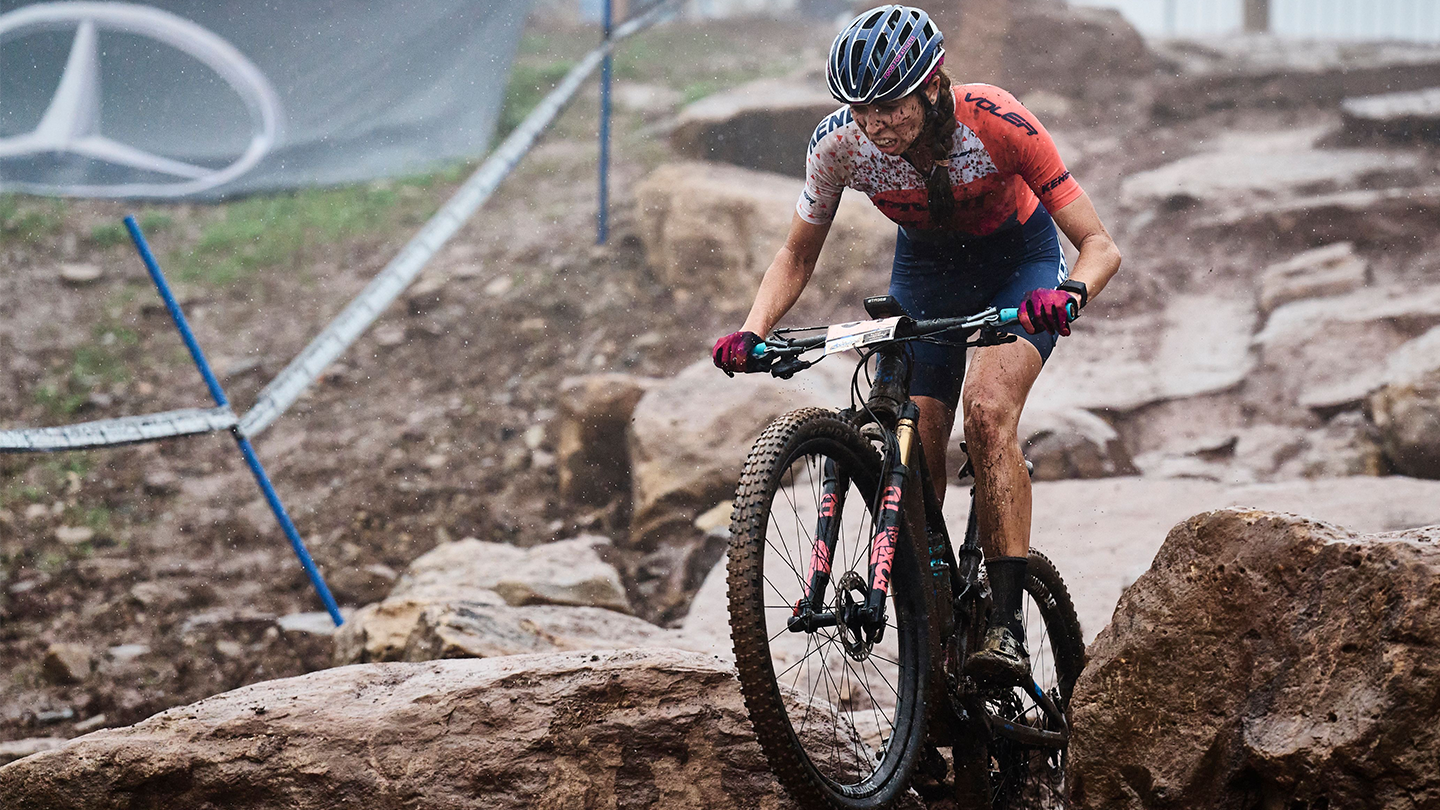

What are the challenges with balancing and managing your season between the wide range of event types you had on the calendar? For example, how do you manage your energy and training to accommodate a twenty-minute short track race and something like Leadville?
Yeah, it’s a really big spread with a twenty-minute short track compared to nearly seven-and-a-half hours for Leadville. For me, I think what has allowed me to do that is really the foundation I’ve set for myself year over year. I do a huge base training at the beginning of the season in January and I think that continues to build that foundation.
I think when you’re really new to endurance sports it’s very difficult, you have to train hard and for long hours for these events. But as you age, and as you have put in huge volume, year after year, you build durability. So a lot of my training focuses on the shorter and higher intensity events. I think your body needs a lot more tuning up for the shorter races. For example, you can’t do VO2 efforts all the time but you need to do them. They are very important when you do them.
For Leadville, since I was also training for the Cross-Country Mountain Bike World Championships two weeks after that, I hadn’t done a ride over 4 hours for the entire month leading up to Leadville. My approach was much more on being strong and fast for the XCO events and using the longer events as a training bout to maintain the foundation I have built through the years. My focus then shifted to recovery and freshness. Racing so frequently requires that shifted focus. This is the approach my coach and I intentionally decided on as a strategy for the year. I knew that if I went to short events with great endurance that would be a flop. But, if I had built with the right intensity, even for the long races, I had the foundation. I was confident that with the proper nutrition, pacing, and approach, I could make it the whole length and that the intensity certainly would not hurt me.
You mentioned you did a lot of base in January. What does a typical week look like during that period?
I usually go to Palm Springs, CA to train in the warmer weather and I usually spend about 3 weeks there. Since the weather is nice and I have the opportunity to be there, that’s a huge volume block for me and I usually build during the block. For the first week, I will probably do 26 hours, then 28 hours the next week and the last week, I think my biggest week there was 32 hours.
When you are doing that volume, what kind of intensity are you riding at and what metrics are you tracking on a daily basis, within a workout as well as over each week?
It’s interesting to look at that across my career. I think as a younger athlete I was always very focused on the ride times and weekly accumulated time. But, when you start talking about 30+ hour weeks, I’m not really going to top that duration in my career. I will continue to do that but I’m not suddenly going to be doing 40-hour weeks. So, I have to look at the quality of those weeks a lot. I do spend a lot of time in base or endurance intensities but I am putting a lot of tempo and sweet spot in those weeks, and even some threshold during that time as well. So, I’m looking at time in the saddle as well as TSS and how that’s building my overall chronic training load that I will count on for a lot of my season.
When you’re on a ride, you mentioned the different intensities. Are you doing structured intervals or are you letting the terrain dictate the intensity?
Definitely structured intervals. My coach will give me different intervals, times, and durations that I’m going.
As I understand it then, as your weekly duration increases during this January period, you aren’t exclusively adding time each week but are you adding intensity in addition to duration each week?
Correct. It’s usually a good indication of how I’m holding up. We maintain or increase intensity while upping the volume. If at any point, I start to fall off from the prescribed intensity or fail workouts, that’s a sign that I’m not holding up enough to do those workouts and that we might need to back off the volume. Only if I’m able to maintain those numbers do I get to continue to push the limits of the volume.
What kinds of observations are you making on the bike in real time to affirm that you are able to tolerate the load or that you need to back off?
That’s an interesting thought. Heart rate certainly plays in but Rate of Perceived Effort is a huge factor. That’s a delicate conversation. As a professional athlete, you have a very intimate and well-curated knowledge of what it “feels like” to be at these different intensities. Just because something feels hard one day doesn’t mean you shouldn’t do it. But, it’s a really good data point of where your body is.
There might be a day where I’m attempting a tempo workout and I can hit those numbers but it’s an all-out effort. That’s not a tempo workout. That’s starting to change the goal of the workout. I think it is a balance between understanding the power, the heart rate, and just the overall perceived exertion that you’re putting out. Power helps inform perception. Sometimes looking at my power meter will help me better understand how I’m feeling.
There are times you can get really overwhelmed and feel really exhausted and think, “Oh, my gosh! I’m going really hard” and look down at the power meter and realize that I’m actually not going that hard. You can then calm down your nervous system and understand, “this shouldn’t be that hard”, Take some deep breaths, reevaluate, and maybe realize there might have been something else that made it hard. It could be the stress or anxiety about the workout and you can calm down. By the same way, you’re feeling a bunch of stress and look down, and see the numbers are really high and realize, “this is really hard because I’m going really fast”.
You just hit the nail on the head as to why you are an elite athlete. So many people freak out about how things are and then they see the power data that contradicts that with lower than anticipated numbers, rather than calming down, a lot of people will continue to get amped up and concerned. This is especially true in a situation where you aren’t in control of the output like in a race and maybe less so in a controlled, training environment.
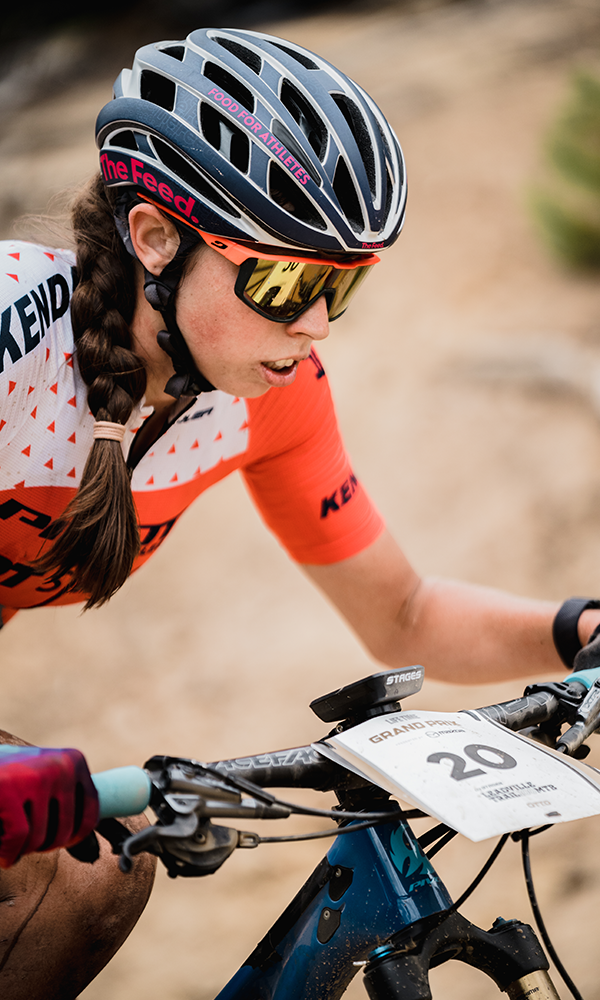

I know you are riding with the Stages Dash head unit. What are some of the metrics you like to look at in a race?
It’s different depending on the race I’m doing. For something like Leadville, I have my 3s average power, my average power, my Normalized Power, and time. But, a feature I really fell in love with this year was on the course page, is the distance to go feature. That’s something I relied on in the long races especially.
Are you using the Dash for mapping in the gravel races?
I am using mapping on my Dash. For example, for Big Sugar, they had limited course markings. It was essential to have mapping on my Dash, otherwise, I wouldn’t have known where to go.
How do you and your coach create your training zones for the different intensities that are prescribed to you?
I’ve done all types of test throughout the year; VO2 Max testing, Lactate testing to develop zones, I’ve done standard FTP tests in the field. We will usually start the season with an FTP test. But, at a certain point it can be very difficult to use one day to measure your ability on every other given day that you train. So, we rely a lot on software training platforms to estimate my power zones throughout the year. With my coach’s feedback and the knowledge I’ve developed over the years, I can get a very good understanding of where I am.
What kind of CTL numbers do you see in the season, when getting ready for your Whole Enchilada record attempt or some of your other bigger events?
It varies a lot from year to year. I think a lot of elite athletes understand it but it often gets lost on some of the amateurs but what is important for people to understand is that often, the more you race, the harder it is to maintain that high CTL. That was something that required constant attention and maintenance throughout this year as I was racing so often. I’ve been much higher CTL numbers in other years. For example, in 2020 when there wasn’t any racing, my CTL could go through the roof. In general, though, somewhere around 100 CTL is pretty comfortable for me.
For the longer races, when it comes to energy management, what kind of cues do you use or what is your strategy for taking in energy vs. your output? For example, on the start line of Leadville, you know you are going to be on the bike for more than 7 hours. How are you planning on managing your energy levels?
This is a place where you can get very scientific by measuring things like Kilojoules. But the practical approach is more important. There is a very fine balance of not over complicating something. I do all the scientific approach on the front end. Then, when it comes to race day I am just executing my plan. So, at Leadville, I planned to take in food every 20 minutes with the goal of taking in 80 grams of Carbohydrates per hour. For me, at a race like Leadville, I used food, power, and RPE all together to inform myself how well I’m doing with the pacing strategy. For example, if I’m maintaining my pacing strategy but I’m going so hard or I’m so stressed that I’m not willing to take my hand off the handlebars to grab my food, that’s an indication to me that something is breaking down somewhere. That means I probably don’t deserve, at that point, to be going that speed. It means that eventually things will break down if I can’t feed myself. It serves as a good check to assure that all of the pieces are aligning. If I am able to maintain the nutrition strategy and fueling strategy that I planned on ahead of time, that tells me that I’m still mentally alert and probably pacing really well.
80 grams of Carbohydrates an hour is quite a bit of food. How long did it take you to get used to that amount of Carb ingestion?
It’s an ongoing process. I’ve been working on my nutrition from the day that I started and I think I will be working on it my whole career. Now, science is showing that we can push even further than we thought we could with >100 grams of Carbohydrates per hour. The more you can take in, theoretically, the better. So, I’m always trying to push a little but further. But, you also have to take into account the course configuration. For example, how many aid stations will you stop at? How much are you willing to carry to avoid stopping? It becomes part of the strategy in the longer events. The night before an event, I have to set time aside, take a deep breath, pull out my calculator and add up exactly what I think I will consume then decide if I want to carry all of it or pick some up on the route at an aid station. It’s a little puzzle. For example at Crusher in the Tushar, I chose not to stop and wore a pack for the whole race. But at Leadville, I knew that at that altitude with those climbs, I knew that lightweight was going to be my best friend. I put my foot down at two of the aid stations and had a NASCAR style pit stop for 10 seconds but I felt that stopping for a few seconds was so much faster than whatever extra time would have been added by dragging a few extra kg of food.
How did you enjoy the Life Time GP format with the mix of gravel and mountain bike?
It was 6 races; 3 gravel and 3 mountain bike. Each rider’s best 5 results contributed to their overall ranking. The point structure started at 30 points for first, 29 for second, 28 for third, etc. The biggest highlight for me was the diversity of events. It gave everyone an opportunity to demonstrate their strengths and amplified their weaknesses. I walked away from the event knowing a lot more about myself but also about what causes my competitors to thrive. I would like to see a bit more diversity in events. There are a lot of long events with Chequamegon being the shortest at 2.5 hours. It would be great to push into the shorter side of things. A bit more technical events on the mountain bike side. For me, I used a hard tail for all the mountain bike races but, for me, it would be interesting to have a bit more technical riding. One of the most controversial discussions was the points structure as the points breakdown was very close. Some people had the argument that wins weren’t weighted heavily enough. I think it was super fun to go into the final event with the winner not predetermined and lots of places still up for grabs. I think it makes it more exciting for the racers and the general public following along.
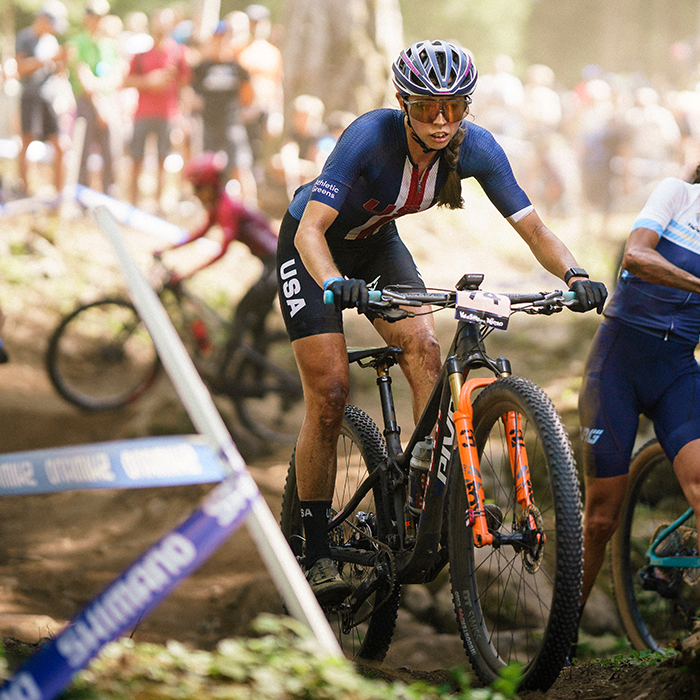

It seems like you took a much different approach to securing sponsorship and support for this year’s racing schedule. Rather than being on an established team, you actually gathered several sponsors to work with as a privateer. That means a bit more work on the front end, I assume, in trying to forge relationships. How did that work for you?
This was my first year as a privateer. It was fun for me. I enjoyed the process and I feel like I embraced that side of sport, of putting all that together and working with my sponsors directly. It gave me a lot of fulfillment that I hoped it would. But, I didn’t know just how much and it was more than I could have imagined. To me it’s just a blessing to be able to talk to my sponsors directly rather than having so many barriers. I think it gives me more value because I understand the products and the companies a lot better. I love the people behind them as well and I certainly hope that it gives them more value too. I feel like I’m better able to listen to their needs and desires. At the end of the day, privateer might seem like solo endeavor but I have felt more connected with my community this year more than ever.
Do you have any new plans for 2023?
Qualifying for the Mountain Bike Cross-Country for the Olympics in Paris 2024 starts next year. I’m not sure how it will impact my schedule for next year. I would like to do the Life Time Grand Prix again next year but the series has not been announced so I will have to wait and see how everything falls into place. I also will need to see the criteria for the Olympic team. So, I will have determine what races are important and how they factor into selection.
Any last thoughts? Anything you would like to talk about that we didn’t cover?
The only thing I would want to emphasize is my desire to continue balancing the endurance and XCO. Because that’s something that I think is really unique to me as an athlete as something I do. I just genuinely really enjoy that. That came in as a little bit of a surprise to people this year. I think some people were skeptical and thinking “why is she doing this?”. The genuine answer is that I want to and I really love it. I think I’ve succeeded that I’ve gotten that across to people but it’s important that people hear that at the end of the year in retrospect.
Hannah can be found at https://hannahfinchamp.com/about-me/











